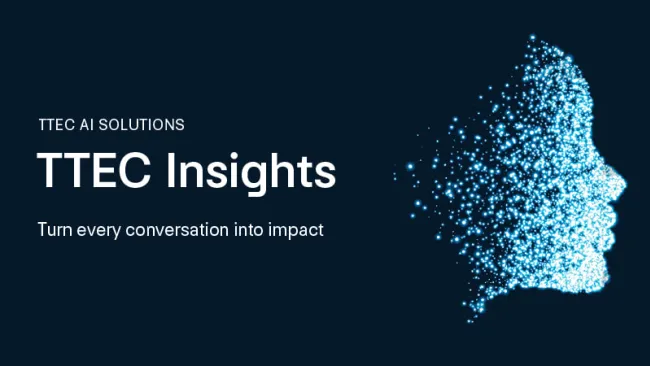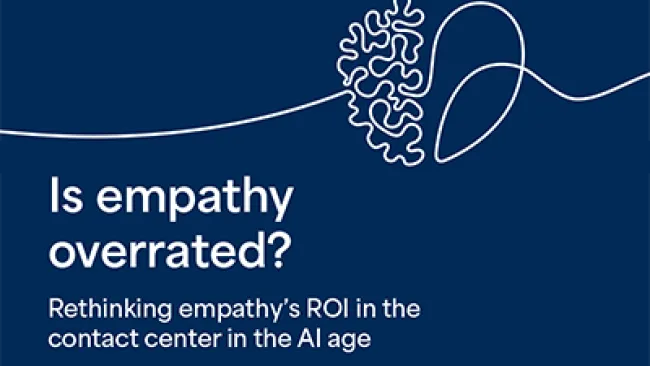Capturing customers’ expectations, aversions, and preferences—i.e. listening to the voice of the customer (VOC)—is table stakes for most organizations today. It has proven to help organizations retain customers, build better products, deliver better services, and systematically understand customer experience to drive meaningful change.
But as consumer behavior and habits evolve, listening practices and the ability to act on insights must evolve as well. A new age of voice of customer programs is emerging, along with opportunities for companies to better understand their customers and drive deeper relationships.
Today, an innovative view of the customer is rapidly taking shape. Emerging trends in VOC programs are focusing on fusing customer feedback with customer databases, enabling an insights-rich closed-loop analytics process. Here are five ways to accelerate and enhance the VOC analytics process and begin delivering more impactful customer experiences.
1. Collect customer feedback from wider and more diverse VOC data sources
Historically VOC programs were primarily survey-based and could thus only draw from a limited source of insight. Newer VOC programs can analyze and act on information from a much wider universe of data sources from several types of feedback:
- Solicited feedback -- Feedback that consumers provide to the organization openly, when either asked to do so or motivated by their experience. This typically takes the form of a customer survey, market research, or a forum/panel.
- Unsolicited feedback -- Unsolicited feedback data goes beyond surveys such as customer care interactions via phone, email, or chat sessions, social media, blogs, and third-party review sites.
- Inferred feedback -- Operational and transactional data associated with a CX or customer journey, such as contact center operational data, purchase transactions, clickstream data, or mobile app location data.
With today’s wide range of channels, it is now essential to tap into the beginning and end of every source of communication.
2. Capture deeper insights with more powerful analytics and tools
Customer feedback is mostly unstructured in nature, however, more companies are leveraging advanced speech recognition/transcription software, and state-of-the-art natural language processing (aka NLP) algorithms to extract insights from text using deep learning techniques such as word embeddings, named entity recognition models, and entity resolution models. These algorithms help organizations uncover what customers are saying about a service or product, their choices, and decision drivers.
Additionally, most of the VOC programs in place today focus on simple speech and phrase recognition, mainly to uncover QA and compliance issues. While this is an important use case and a more efficient and cost-effective tool than the human-powered alternative, there is more potential and value for a business to integrate with predictive analytics.
3. Use a comprehensive framework to proactively surface and distribute insights
Mature VOC programs also focus on mining customer insights, in addition to identifying operational opportunities. We at TTEC have developed a robust voice of the customer framework and supporting algorithms to uncover insights leading to product or service enhancements and innovation, operations improvements, and CSAT/NPS improvements. Our VOC analytics also help improve customer retention and loyalty, as well as employee engagement. Our VOC framework includes:
- Topic modeling: Identify top contact reasons by category for actionable, tailored insights
- Sentiment analysis and scoring: Consistently evaluate the positive and negative assertions, while considering context, that are associated with a document or entity
- Dialogue complexity: Determine complexity by contact reason to identify opportunities for automation and self-service
- Emerging topics: Uncover impactful new contact reasons that could be leading indicators of future problems
- Expected topics: Predict topic volume in the future for appropriate staffing and training
- Emotion analysis: Analyze higher dimensional extensions of sentiment, which represents a richer set of human emotions
- Propensity models: Build statistical scorecards to predict repeat calls and associated call reasons
This framework worked to great success with one of our clients in the wellness industry. We mined voice recordings and customer chat transcripts, in addition to utilizing natural language processing (NLP) and machine learning to uncover key topics discussed by customers. We then applied our proprietary algorithms to understand the complexity and sentiment of each topic, along with detection of emerging topics.
Using this framework, we could identify quick-win opportunities, including app/website improvements, new member education, and customer retention strategies. Our customer sentiment and complexity framework also highlighted opportunities for product improvements, automation, self-service, and training. From there, new and emerging topics were reported on an ongoing basis so that issues could be uncovered and quickly addressed.
4. Continuously act and implement VOC analytics insights
Remember VOC is a process, not a “one-and-done” endeavor. Customer service and customer experience across multiple channels should continually be evaluated to determine if it still meets customer needs or if corrective action is necessary. VOC matters -- but only if you act on it.
VOC and analytics programs should be operationalized to deliver early warnings and alerts, self-service recommendations, advanced dashboards with customer and operational insights, trend reports, and enable workflow automation.
Ultimately, VOC programs should enable businesses to close the feedback loop, make meaningful changes to processes/operations, which in turn transforms to exceptional customer experience.
5. Monitor for improvements and action
Lastly, the ongoing monitoring assists in tracking progress as time goes on. Remember to stick to established CX metrics like net promoter score (NPS), customer satisfaction (CSAT), and customer effort score, then build a system that lets feedback flow in effortlessly, and watch the metrics improve over time as employees act on this valuable feedback.
Interactive dashboards and wallboards are effective ways to display, monitor, and track key business metrics in real-time.
Discover your customer’s voice
The maturity of VOC programs has evolved significantly over the last couple of years. It is now regarded as an important strategic process that drives decisions across multiple departments from customer success and product management to operations, marketing, and sales.
However, even a successful VOC program must evolve to keep up with customer demands and expectations. Listening closely for impactful insights from your customers means utilizing the right technology, analytics, and practices to garner meaningful results in real time.
Additional resources from our voice of customer analytics consultants
We hope you enjoyed this article looking at the importance of voice of the customer analytics in creating amazing customer experience. Here are additional resources from our VOC analytics consultants and experts.
Voice of the Customer Strategy and Best Practices: Most customer experience leaders say they have active voice of the customer (VOC) programs in place. They track NPS, ask customers to complete post-interaction surveys, employ speech analytics, and keep an eye on social media mentions. But too often they are not really listening. That is where the expertise and best practices of VOC analytics companies can help your brand. Gain valuable insights about your products and services by implementing these five best practices for customer feedback. Also learn about customer data analytics complications that hinder voice of the customer program implementation and how to overcome them.
Change the Voice of Customer Conversation in the Contact Center: Contact centers are primarily designed to operate on efficiency. Because of this, nearly everything about their operations gets measured. But in the fast-paced economy driven by high customer expectations, are companies measuring the right things in the contact center? Leading VOC analytics firms know that it is important to answer “why” questions to uncover opportunities to improve the customer experience.
Voice of the Customer Solutions: Imagine if you could increase understanding of your customers, provide relevant customer engagement with context, identify and fix customer issues as they occur, and reduce churn by identifying customers at risk. Our comprehensive Voice of Customer solution makes it possible by integrating all customer feedback: from voice recordings, chats, emails, agent notes, digital footprint, social commentary, and surveys to their shopping behavior and characteristics.















